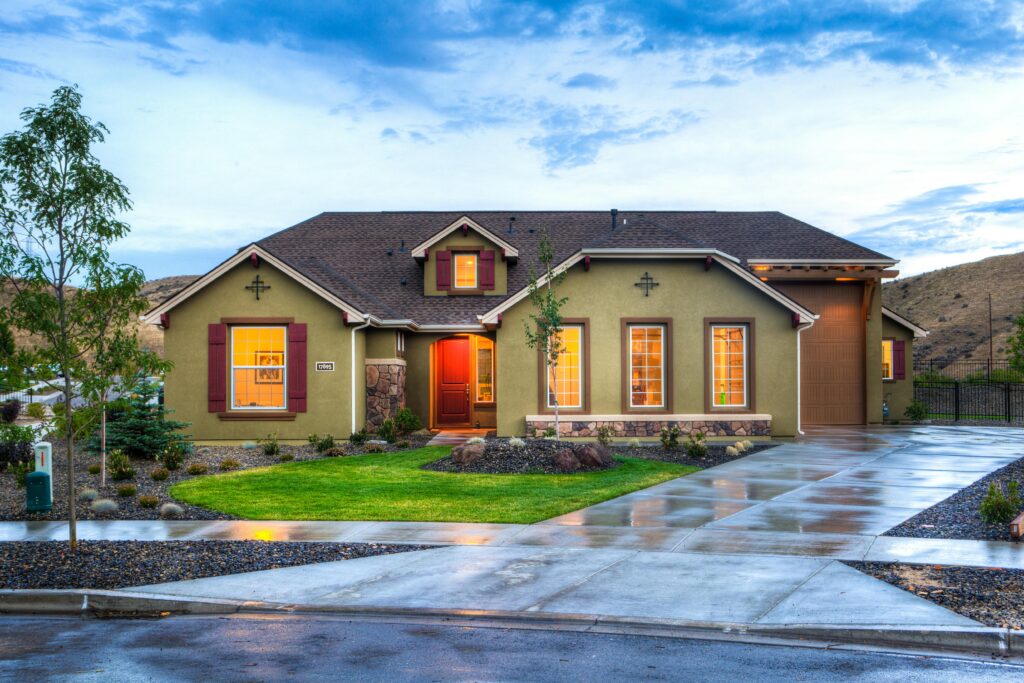Pop the confetti and throw the glitter, because the U.S. real estate market has been on a roll!
Over the past two decades, homes, land, and commercial spaces have been on the rise.
It’s not just about inflation or the economy growing; it’s about areas developing, communities thriving, and landscapes transforming. From the suburbs to the cities, from the mountains to the coast, every square inch tells a story of growth and potential. So next time you’re on a Sunday drive, take a look around and appreciate (pun intended) the ever-evolving tapestry of American real estate!
In terms of an investment, home prices are traditionally thought of as relatively stable and slow-growing, more or less keeping up with the rate of inflation while exhibiting little volatility. But at least over the past 20 years or so, home prices have been anything but. In fact, over the past two decades, home values have undergone two distinct — and opposite — periods that aren’t generally associated with the housing market: a period of negative returns and a period of double-digit returns, both over a relatively short period of time.
General US Home Value Trends Over the Past 20 Years
All it takes is a look at the chart below to see that the general trend of U.S. home prices over the past 20 years is up. While there have been periods of rising and falling home values, the end result is this: In the past 20 years, the average home price in the U.S. has grown from about $140,000 to about $340,000, as of April 2023.

The Great Decline, 2006-2012
Home prices made a fairly dramatic jump between 2003 and 2006, but the party ended with The Great Recession and the housing price meltdown over the ensuing five to six years. As well-documented both in the financial press and in movies such as “The Big Short,” housing prices were artificially inflated in the years running up to The Great Recession.
Adjustable-rate loans were handed out to underqualified buyers with little-to-no documentation, and when interest rates climbed higher, many of these homeowners defaulted, dragging down the housing and banking industries and nearly taking down the entire U.S. economy as well. This combination of economic factors took years to work itself out, and home prices continued to fall even after the economy as a whole dug its way out of the recession.
Ultimately, the average home value in the U.S. fell by about 33%, nearly eliminating all the gains they had experienced from 2003 to 2006. That effectively made 2003-2012 a “lost decade,” in which housing prices hardly gained at all.
The Booming Recovery, 2012-2023
After all the excesses had been wrung out of the U.S. housing market, dragging home prices far below what many considered “fair,” a boom period followed over the next decade, reaching a fever pitch in the 2020-2022 period.
In 2012, Zillow announced that U.S. home values had bottomed. Prices in the second quarter of 2012 gained by 0.2% since the second quarter of 2011, the first year-over-year gain since 2007. At the time, the average home price in the U.S. was just $149,300. By the second quarter of 2023, that average value had skyrocketed to $344,671, a gain of about 131%.
Straightening Out the Line
As with many investments, such as real estate investments and the stock market, it can pay to zoom out and take a long-range view of pricing trends. When you eliminate the month-to-month and even year-to-year fluctuations, a general trend line emerges. In spite of the boom-and-bust periods the housing market has experienced over the past 20 years, the long-term trend is up, and actually fairly stable. While the 2006-2012 period dragged values well below the trend line — and the 2020-2022 period spiked prices well above it — the average long-term trend remains strong and higher. As housing is generally a long-term investment — with the exception of a small percentage of house flippers — this trend line is what matters most.

Specific Cities
The gains in certain metropolitan areas over the past decade have been nothing short of astounding. In the Miami-Ft. Lauderdale area, for example, 2012 second-quarter home prices averaged $148,300. By May 2023, Ft. Lauderdale homes sold for $524,274 on average, while Miami houses reached $553,743, nearly quadrupling. Atlanta home prices jumped from $107,900 to $384,388 over the same time period.
Other cities haven’t been as lucky, however. In Detroit, home prices averaged $74,000 in the second quarter of 2012, but as of May 2023, prices had actually fallen, down to $64,414. Prices in Cleveland haven’t fared any better, dropping from $108,400 in the second quarter of 2012 to just $102,763 in May 2023.
Unlock your potential to Grow Your Wealth Now: https://futurerecapital.com/opportunities/
#RealEstateInvesting #AffordableHousing #WealthCreation #CommunityTransformation #InvestmentOpportunity #ResidentialRealEstate #CommercialRealEstate #FinancialFreedom #PropertyInvestment #PassiveIncome #RealEstateDevelopment #AssetManagement #InvestWithPurpose #RealEstateGrowth #DiversifiedPortfolio #FinancialIndependence #RealEstateWealth #RebuildingCommunities #RealEstateRenaissance #PropertyRenovation #InvestmentStrategy #RealEstatePortfolio #RealEstateLife #InvestInHomes #BuildingWealth #HousingMarket #RealEstateSuccess #InvestmentGoals #RealEstatePros #FutureRECapitalManagement

